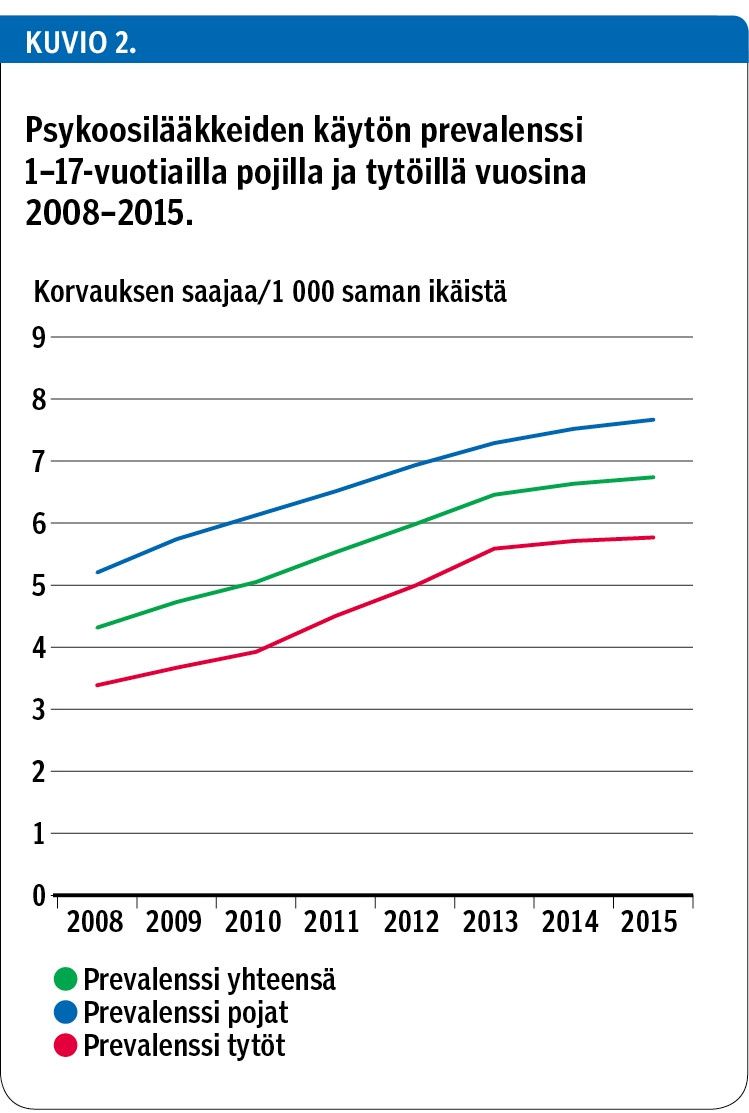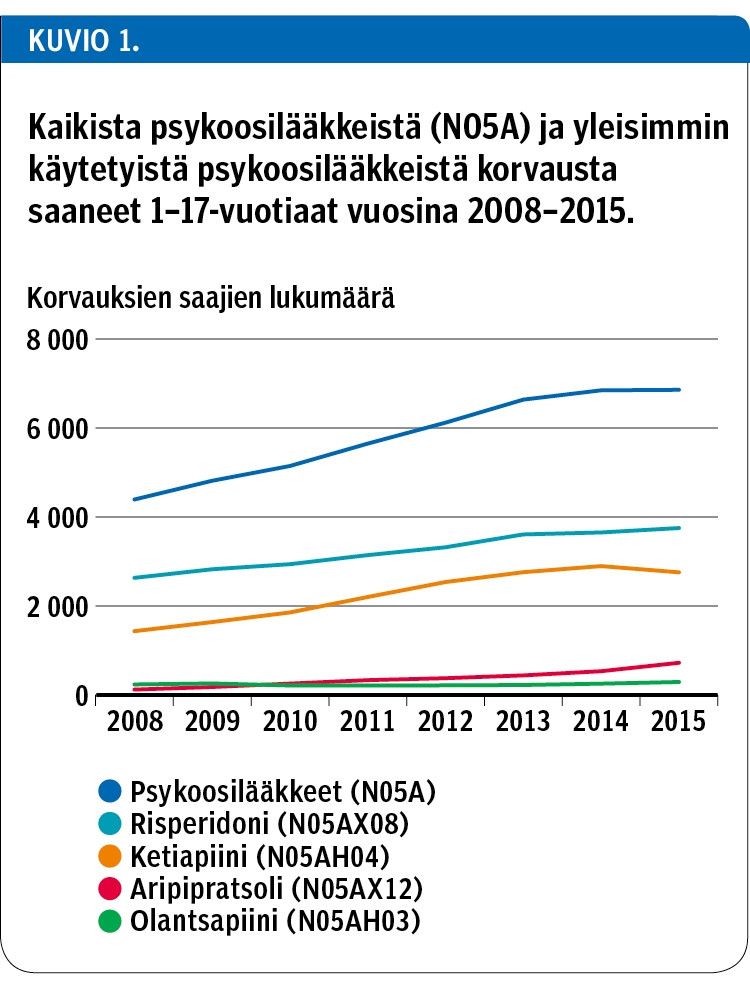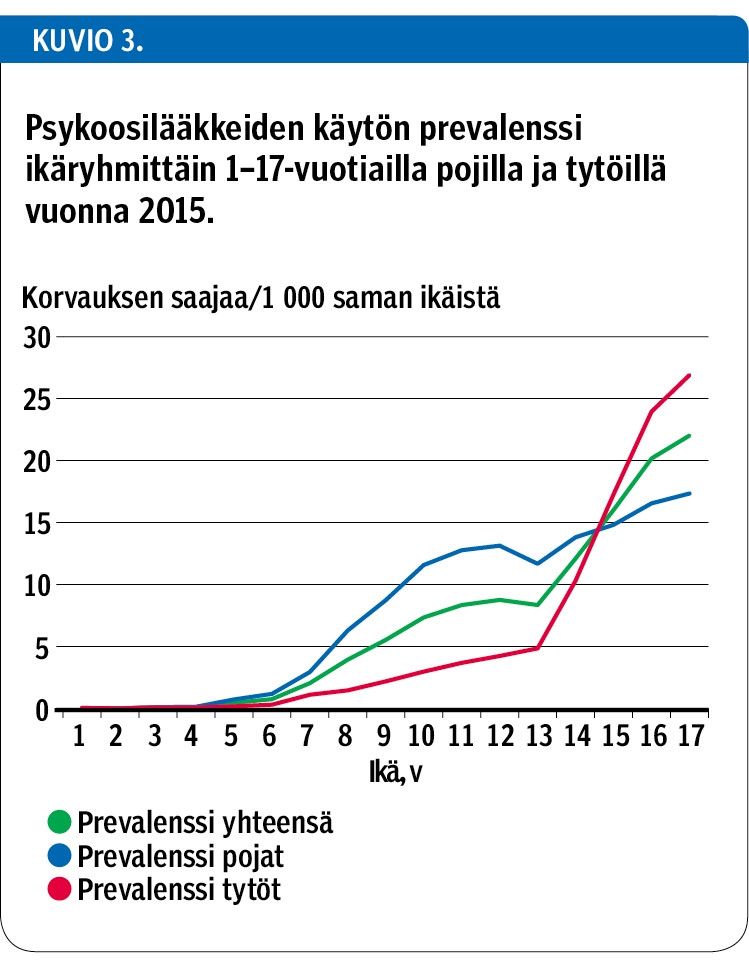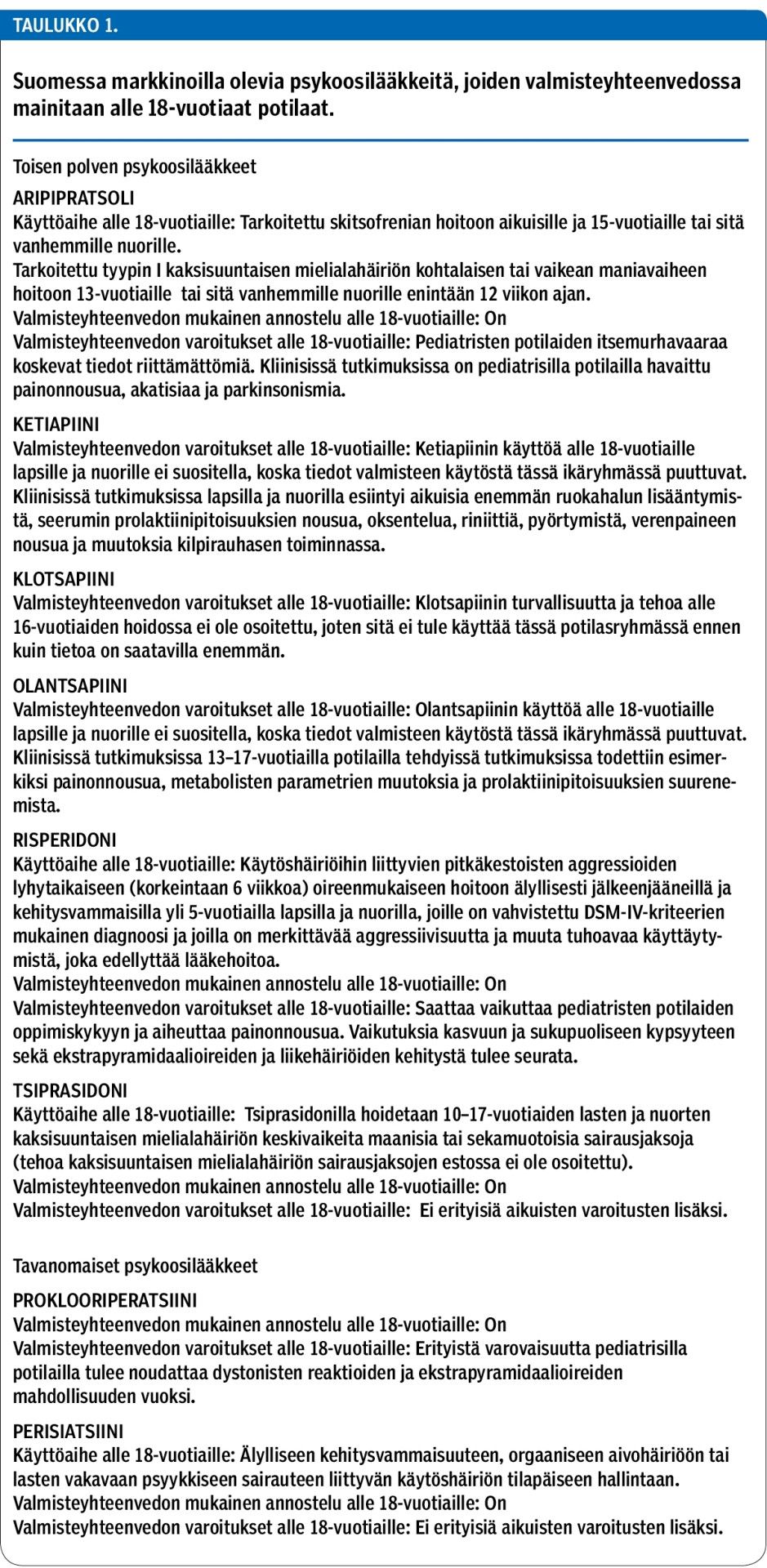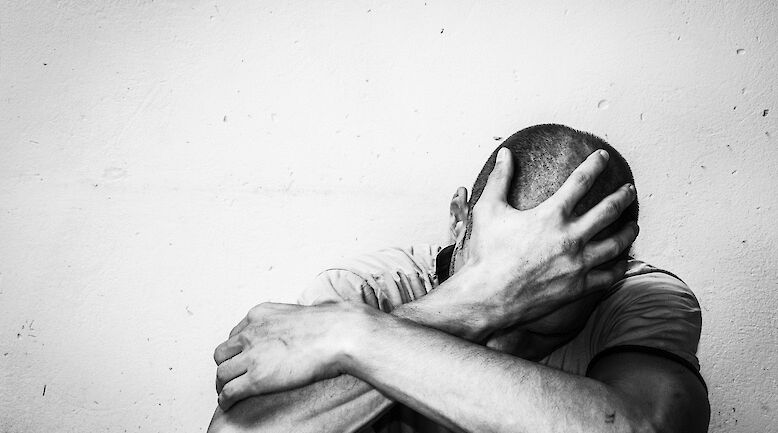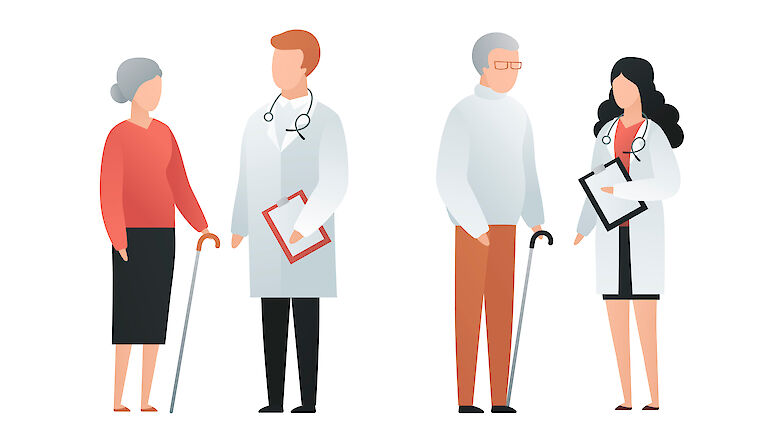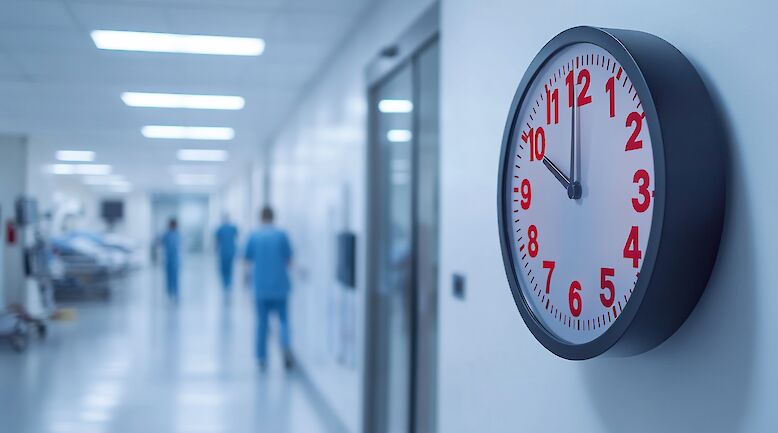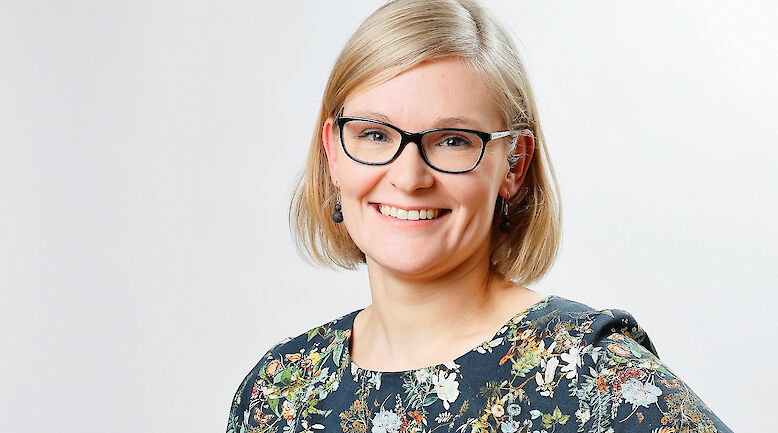Prescribing of antipsychotics for children and adolescents is increasing in Finland

Background
Only few antipsychotics have official marketing authorization for treatment of children and adolescents. However, prescribing of antipsychotics in this patient group has been increasing lately. This has been shown in international studies, but there is a lack of research from Finland. The aim of this study was to investigate antipsychotic utilization in 1–17-year-old children and adolescents in Finland in the period 2008–2015, and also by age group, gender and active substance.
Methods
The material of this study, statistics on antipsychotic use according to age and gender, was derived from the prescription register of The Social Insurance Institution of Finland. Antipsychotic use was studied on the basis of prevalence in populations of uniform age.
Results
Prescribing of antipsychotics for children and adolescents has been increasing in Finland during the past eight years. Boys use more antipsychotics in childhood than girls, but antipsychotic use by girls increases in adolescence, and the prevalence of antipsychotic use by girls surpasses that of boys at the age of 15. The use of antipsychotics increases remarkably in both genders from the age of 13. The most used antipsychotics in children and adolescents under 18 years of age are risperidone, quetiapine, aripiprazole and olanzapine. There are some differences according to age group and gender: risperidone is mostly prescribed for boys of elementary school age and quetiapine for girls of junior high school age. Quetiapine and olanzapine are often prescribed off-label in under 18-year-olds.
Conclusions
Prescribing of antipsychotics for children and adolescents has increased in Finland during the past eight years. When initiating antipsychotic use, the benefits and adverse effects should be carefully evaluated, medical care should be monitored throughout the entire treatment, and the use of antipsychotics should be as short-term as possible. More research is needed about the reasons for the increasing prescribing of antipsychotics and the availability of early interventions, psychotherapy and other psychosocial treatment and rehabilitation.
